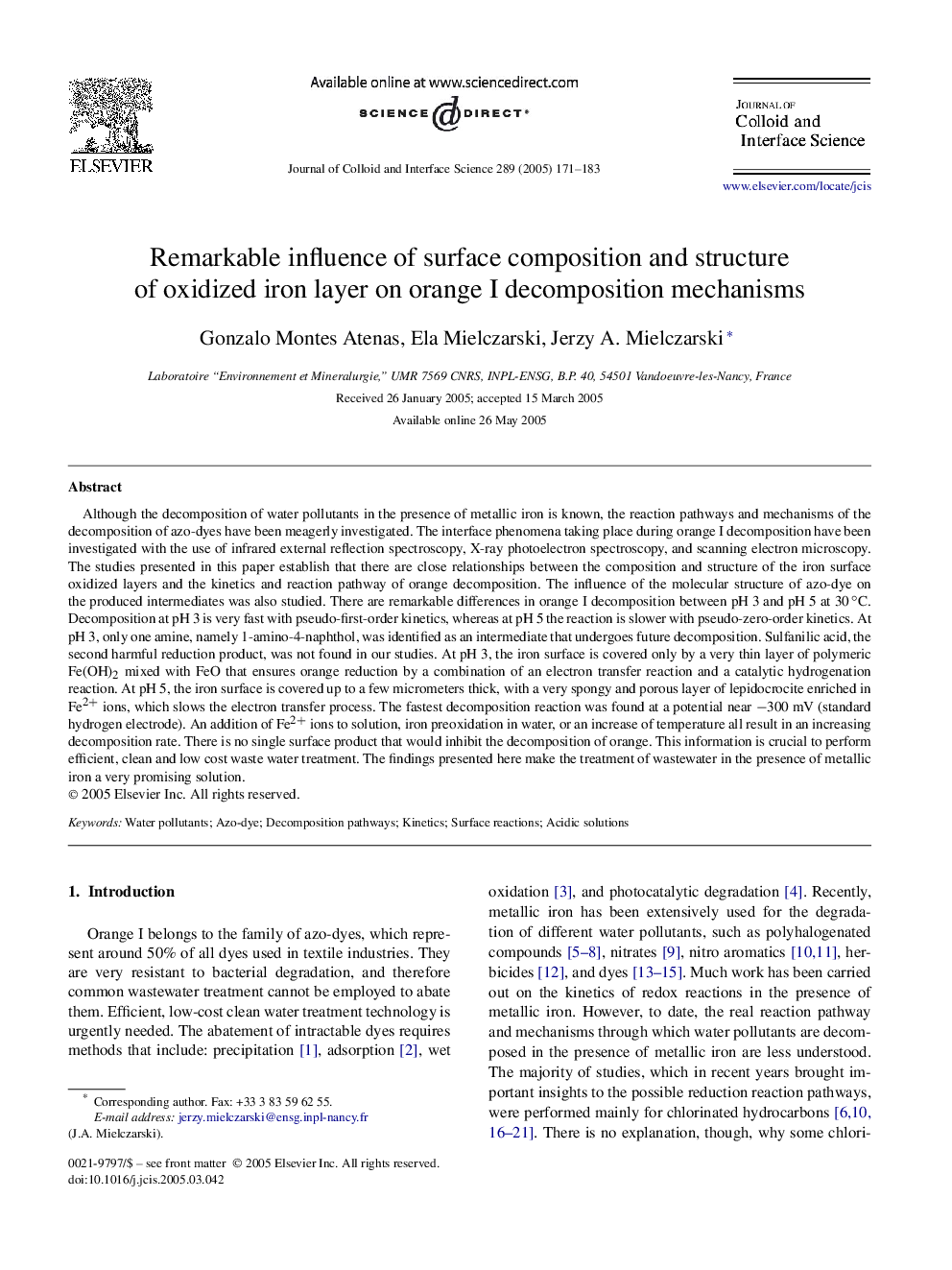| Article ID | Journal | Published Year | Pages | File Type |
|---|---|---|---|---|
| 10377741 | Journal of Colloid and Interface Science | 2005 | 13 Pages |
Abstract
Although the decomposition of water pollutants in the presence of metallic iron is known, the reaction pathways and mechanisms of the decomposition of azo-dyes have been meagerly investigated. The interface phenomena taking place during orange I decomposition have been investigated with the use of infrared external reflection spectroscopy, X-ray photoelectron spectroscopy, and scanning electron microscopy. The studies presented in this paper establish that there are close relationships between the composition and structure of the iron surface oxidized layers and the kinetics and reaction pathway of orange decomposition. The influence of the molecular structure of azo-dye on the produced intermediates was also studied. There are remarkable differences in orange I decomposition between pH 3 and pH 5 at 30â°C. Decomposition at pH 3 is very fast with pseudo-first-order kinetics, whereas at pH 5 the reaction is slower with pseudo-zero-order kinetics. At pH 3, only one amine, namely 1-amino-4-naphthol, was identified as an intermediate that undergoes future decomposition. Sulfanilic acid, the second harmful reduction product, was not found in our studies. At pH 3, the iron surface is covered only by a very thin layer of polymeric Fe(OH)2 mixed with FeO that ensures orange reduction by a combination of an electron transfer reaction and a catalytic hydrogenation reaction. At pH 5, the iron surface is covered up to a few micrometers thick, with a very spongy and porous layer of lepidocrocite enriched in Fe2+ ions, which slows the electron transfer process. The fastest decomposition reaction was found at a potential near â300 mV (standard hydrogen electrode). An addition of Fe2+ ions to solution, iron preoxidation in water, or an increase of temperature all result in an increasing decomposition rate. There is no single surface product that would inhibit the decomposition of orange. This information is crucial to perform efficient, clean and low cost waste water treatment. The findings presented here make the treatment of wastewater in the presence of metallic iron a very promising solution.
Related Topics
Physical Sciences and Engineering
Chemical Engineering
Colloid and Surface Chemistry
Authors
Gonzalo Montes Atenas, Ela Mielczarski, Jerzy A. Mielczarski,
